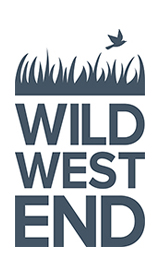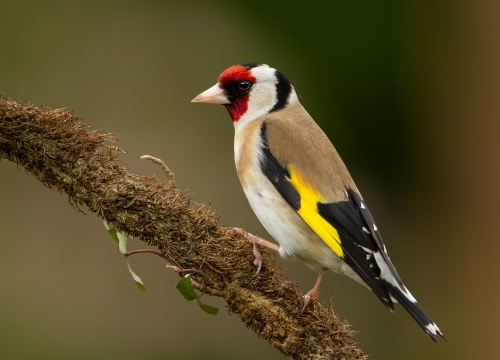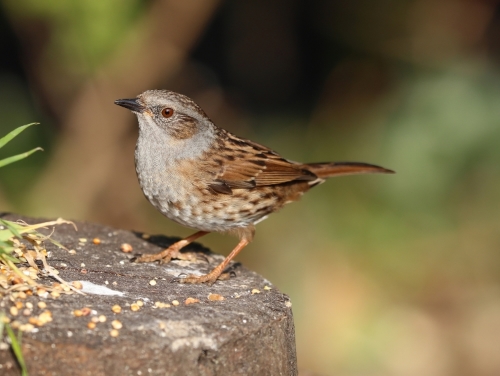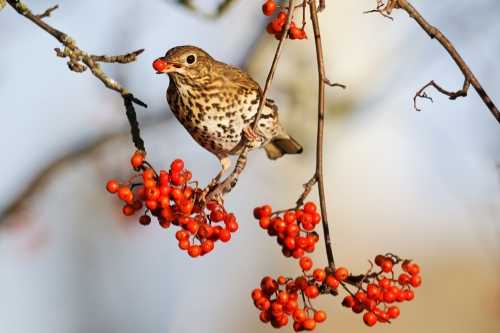Instantly recognisable by its colour or song, the blue tit is a regular visitor to the gardens and green spaces of central London. The blue tit can often be seen foraging in gangs of great tits and long tailed tits, searching amongst the vegetation for insect pests such as aphids and beetles.
Go to the RSPB's website for further information on bird species
Goldfinch
A vibrant and colourful bird, the goldfinch is sociable and often breeds in loose colonies. The goldfinch feeds largely on small seeds, as well as occasionally on insects, and at bird feeders over winter.
Wren
Despite being one of the smallest birds in central London, the wren is also one of the loudest. Males can build more than five nests in their territories to attract females to breed. Wild West End will provide space for these nests, as well as increase the feeding opportunities for this insectivorous species.
Dunnock
The dunnock is a small brown and grey bird, its tuneful singing gives it its other name – the hedge accentor. The dunnock tends to feed on the ground, particularly under the cover of a hedge or layer of shrubs where they find invertebrates, seeds, and berries. Males can often be seen aggressively defending their territories during the breeding season.
Wagtail
Instantly recognisable by the constant flicking of its tail when on the ground, or by its undulating flight when airborne, the grey wagtail is a regular visitor to the gardens and roofs of central London. The pied wagtail is often seen on green roofs, where they forage for their favoured prey of small invertebrates, particularly flies.
Black redstart
With a preference for rocky gorges and cliff-face habitats, the black redstart is well adapted to living in urbanised surrounds such as West End rooftops. However, London’s small population is thought to be in decline. This is due to the proliferation of highly sustainable developments that lack the nesting and feeding opportunities found within older buildings. In 2014, breeding individuals were recorded locally on Regent Street, so Wild West End will take every opportunity to expand the black redstart’s range by creating nesting and feeding sites.
Song thrush
Known for its tuneful and varied song, the song thrush is a popular, but uncommon visitor to the parks and gardens of the West End. Wild West End will provide the thrush, whose diet includes insects, slugs and snails, with additional nesting sites and shrub cover. Berry-bearing trees and bushes will provide a vital food source over winter.
House Sparrow
The house sparrow was once so abundant in the West End that it was recorded nesting in the street lamps along The Mall. Habitat losses, and most notably the reduction in available nesting spaces in buildings, have all but excluded this species from central London. Wild West End aims to attract this social resident back to the West End by providing specific communal nest boxes and abundant food sources so that the ‘Cockney Sparrow’ can once again thrive in central London.









